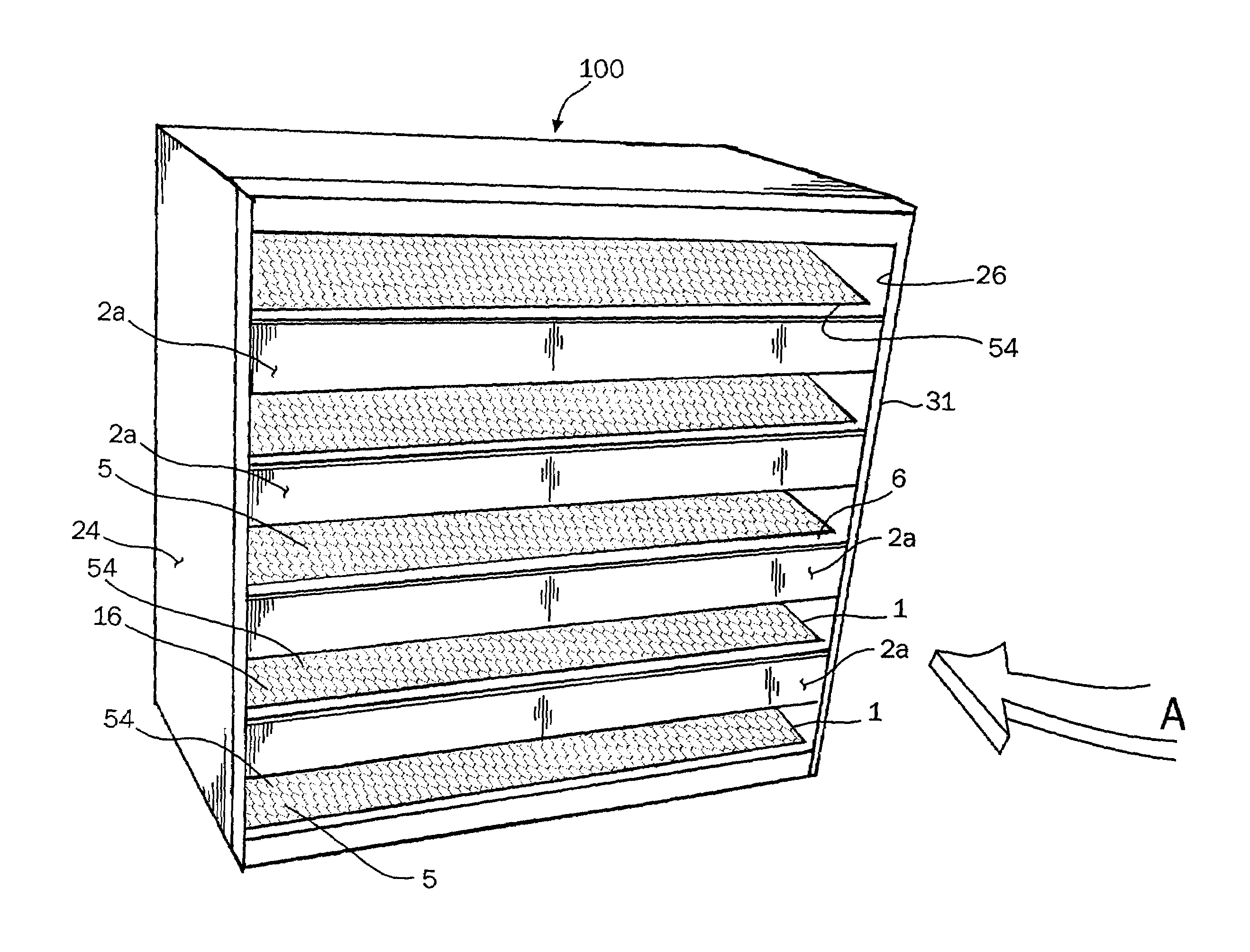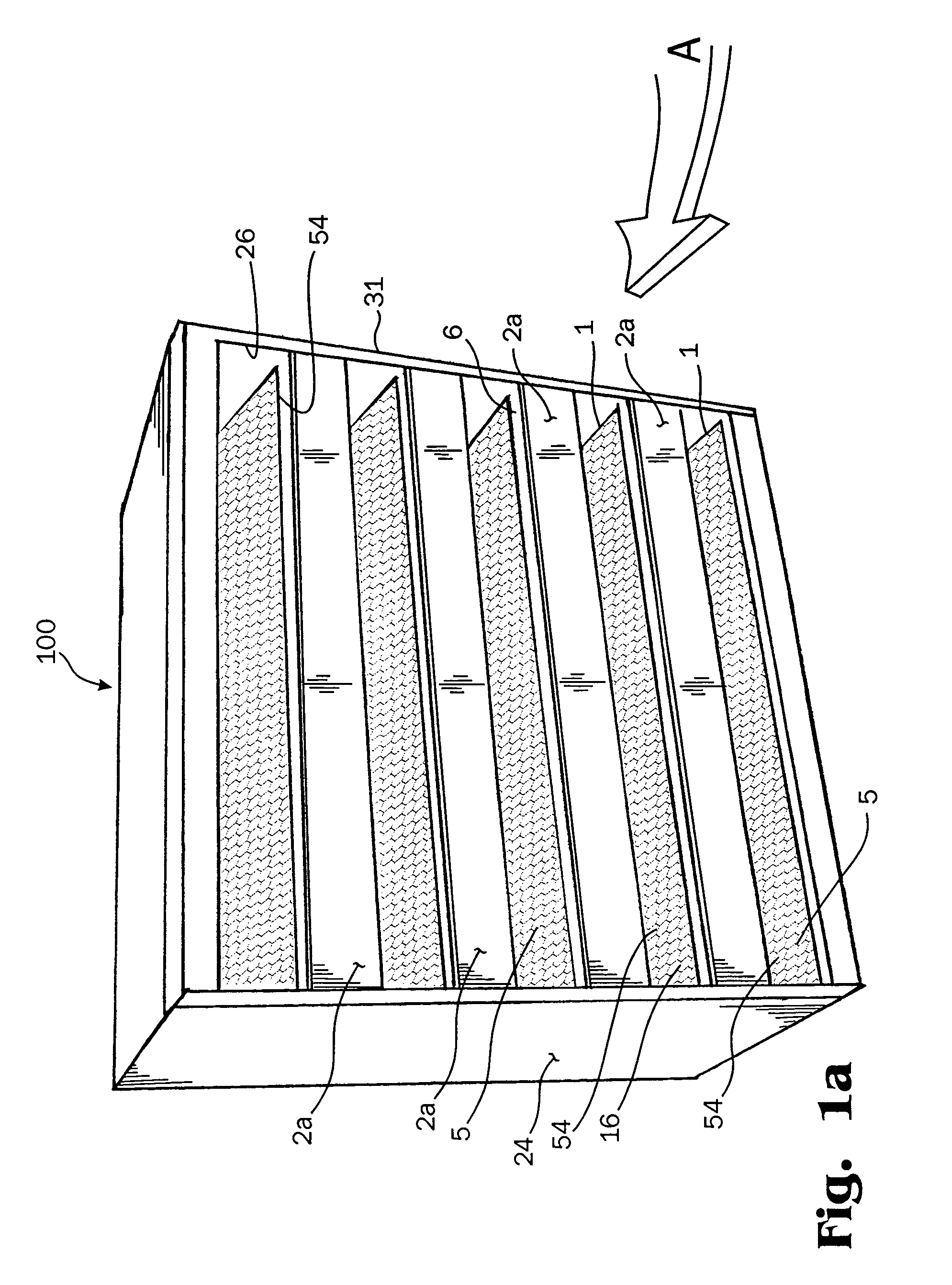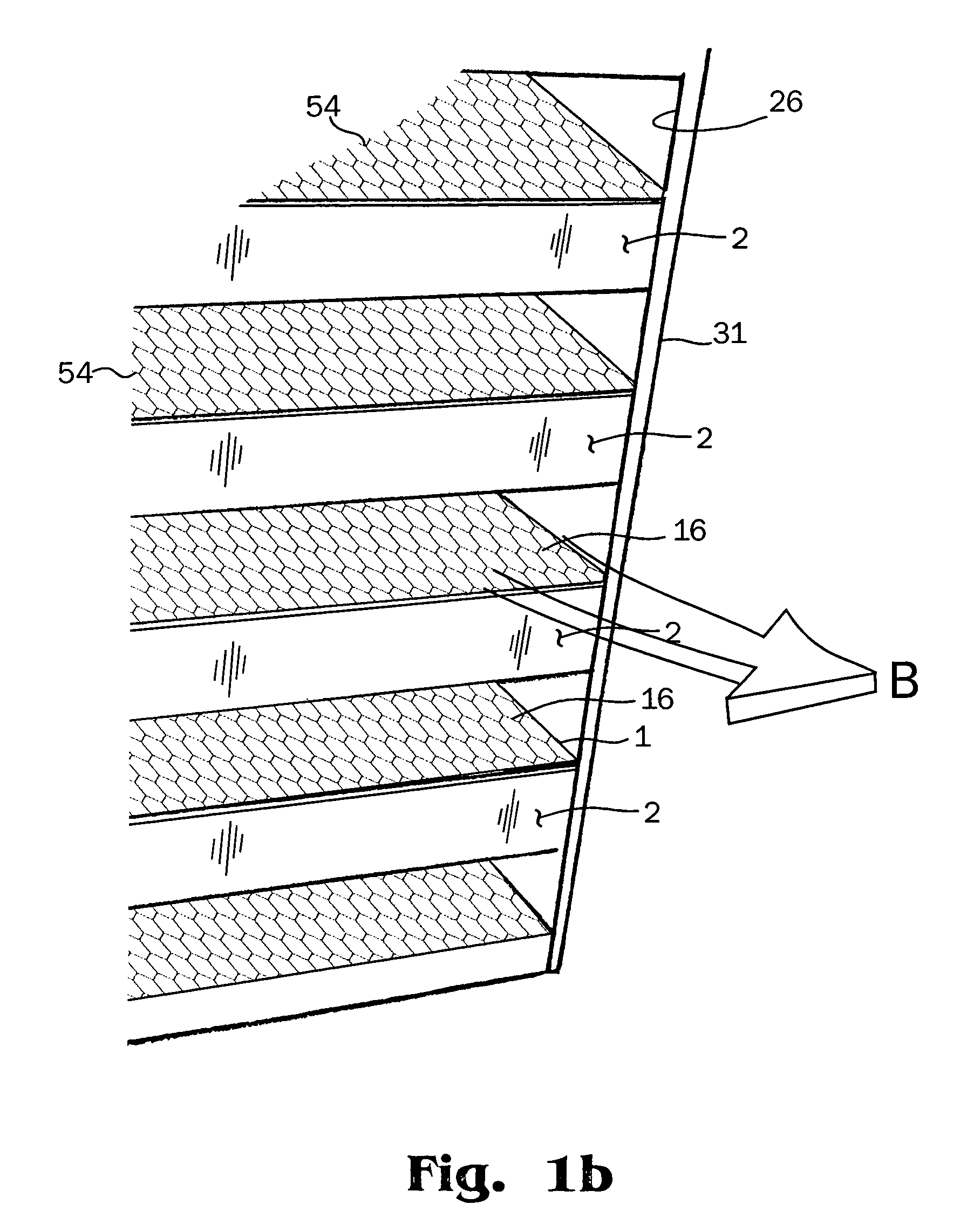Low pressure drop deep electrically enhanced filter
a technology of low pressure drop and filter media, which is applied in the direction of filtration separation, other chemical processes, separation processes, etc., can solve the problems of undetectable reduction of the surface area of the filter media available, the limitation of the cheney'736 to use such separators, and the construction of embodiments according to the principles, etc., to achieve effective and safe electrically enhanced filters, high efficiency filtration, and high dust holding capacity
- Summary
- Abstract
- Description
- Claims
- Application Information
AI Technical Summary
Benefits of technology
Problems solved by technology
Method used
Image
Examples
Embodiment Construction
[0048]As used in this description, the variable:[0049]d1 represents the distance between the ground control electrode 7 and the ionizing electrodes 8;[0050]d2 represents the separation between the charge transfer electrodes 8 and the ionizing electrodes 5;[0051]d3 represents the distance between the downstream ground electrodes 4 and the charge transfer electrodes 5;[0052]d4 represents the nominal depth of each fold as illustrated, by way of example, in FIG. 12, of the filter medium 1, 16 or 17, as measured between the base of the fold to the longitudinally opposite apex of the fold; and[0053]d5 represents the nominal width of the base of each fold as exemplified by FIG. 12, as measured between successive upstream apices of a fold.
[0054]Turning now to the drawings collectively, and particularly to FIG. 1a, which shows an elevation view of an inlet side of a filter assembly 31 for an ionizing field electronically enhanced filter 100 with the ionizer assembly removed, FIG. 1b which sh...
PUM
| Property | Measurement | Unit |
|---|---|---|
| peak-to-peak depths | aaaaa | aaaaa |
| particle size | aaaaa | aaaaa |
| particle size | aaaaa | aaaaa |
Abstract
Description
Claims
Application Information
 Login to View More
Login to View More - R&D
- Intellectual Property
- Life Sciences
- Materials
- Tech Scout
- Unparalleled Data Quality
- Higher Quality Content
- 60% Fewer Hallucinations
Browse by: Latest US Patents, China's latest patents, Technical Efficacy Thesaurus, Application Domain, Technology Topic, Popular Technical Reports.
© 2025 PatSnap. All rights reserved.Legal|Privacy policy|Modern Slavery Act Transparency Statement|Sitemap|About US| Contact US: help@patsnap.com



